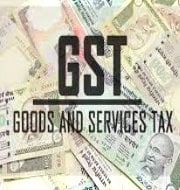President Gives Assent to Four GST Legislations
President Pranab Mukherjee has given assent to four supporting legislations on Goods and Services Tax (GST). The four legislations are:
- The Central GST Act, 2017,
- The Integrated GST Act, 2017,
- The GST (Compensation to States) Act, 2017, and
- The Union Territory GST Act, 2017.
The above bills were passed in Rajya Sabha on April 6th and in Lok Sabha on 29 March. Now with the President’s assent, these bills will pave way for the roll-out of GST regime from 1 July.
The Central Goods and Services Tax Act, 2017, deals with the levy of the Central Goods and Services Tax by the union government over the supply of goods and services within the boundary of a state.
The Integrated GST Act, 2017, provides for the levy of Integrated Goods and Services Tax by the union government on the interstate supply of goods and services.
The Goods and Services Tax (Compensation to States) Act, 2017, provides for compensation for the losses incurred by the states on account of implementation of the Goods and Services Tax.
The Union Territory GST Act, 2017, provides for the levy and collection of tax on intra-state supply of goods, services or both, by the Union Territories.
Jammu & Kashmir
GST regime will not be applicable to Jammu and Kashmir because of the fact that Article 370 gives special status to the state. So, the state will have to legislate its own law and integrate with the GST regime.
GST
Goods and Services Tax is a comprehensive indirect tax which is to be levied on the manufacture, sale and consumption of goods and services in India. This is so far the biggest tax reform in the country. GST will subsume central excise, service tax, Value Added Tax (VAT) and other local levies to create a uniform market. GST eliminates the cascading effect of taxes because it is taxed at every point of business and the input credit is available in the value chain.
The tax rates under GST regime will be based on the recommendation GST Council. Council has two-thirds voting by States and one-third by Centre.
Month: Current Affairs - April, 2017


